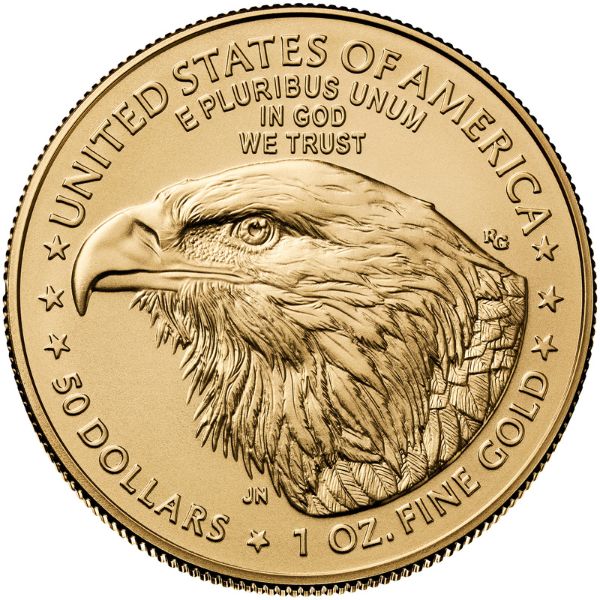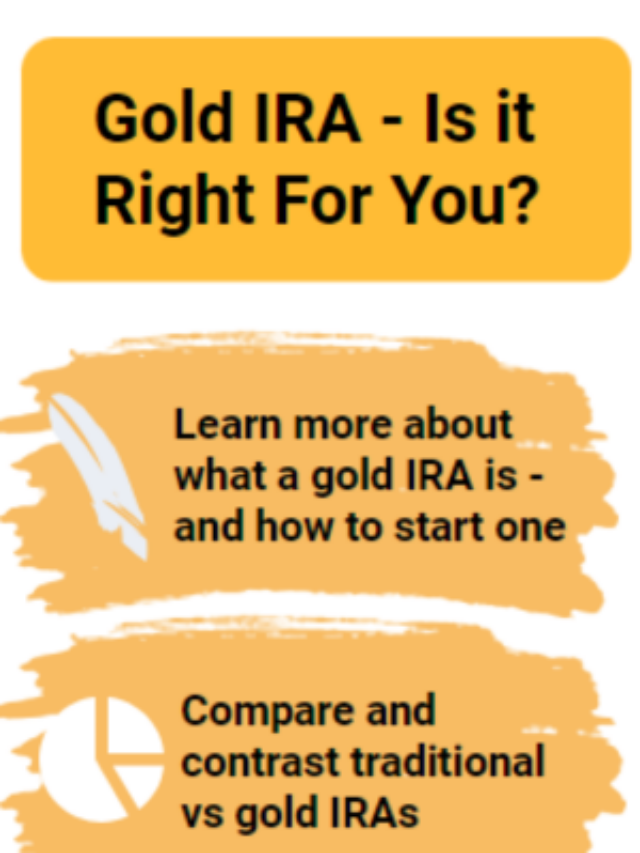Traditional Vs Gold IRAs – What’s the Better Way to Save For Retirement?

At a Glance:
-
- Gold IRAs allow investors to plan for retirement using precious metals.
- A gold IRA offers greater control over which assets investors can collect in their IRA accounts.
- Investing in a traditional IRA offers a wider diversity of portfolio risk profiles.
Comparing Traditional Vs Gold IRAs – Choosing Between Two Retirement Investment Options
When it comes to saving for retirement, investors want the very best. Individual Retirement Accounts (IRAs) are a popular way for consumers to prepare for a lifetime of financial independence. An IRA is a tax-advantaged investment account that investors use to save money for retirement.
The Internal Revenue Service (IRS) allows investors to avoid paying taxes on IRA contributions (and capital gains) until they withdraw from their accounts. This makes IRAs a fantastic strategy for investors who want to build a sizable nest egg for themselves. Investors who want to open an Individual Retirement Account have several options, including a gold IRA.
Since 1997, the IRS has offered another option for future retirees: the gold IRA. Comparing traditional vs gold IRAs can be complicated. Gold IRAs are a fantastic choice for investors who love stacking precious metals, but they don’t offer the risk diversification and historical benefits associated with traditional retirement investing accounts.
Are gold IRAs better than traditional ones? Gold IRAs are a good option for investors who want more control over their portfolios – and gold sometimes outpaces the stock market’s performance. Traditional IRAs are also a solid choice for retirement planning, as they offer a greater degree of risk diversification and historical performance.
What is a Gold IRA?
A gold IRA is a unique way to invest for your retirement. When you open a self-directed gold IRA, you’re allowed to add precious metal products to your tax-advantaged retirement portfolio. The gold IRA is a relatively new option. It was first introduced as part of the 1997 Taxpayer Relief Act. Since then, precious metal IRAs have become one of the most popular ways for stackers to save for retirement.
Are gold IRAs better than traditional ones? Gold IRAs are a good option for investors who want more control over their portfolios – and gold sometimes outpaces the stock market’s performance. Traditional IRAs are also a solid choice for retirement planning, as they offer a greater degree of risk diversification and historical performance.
What Precious Metals are IRA Eligible?
The IRS sets strict requirements for which products are eligible for inclusion in a gold IRA. Contrary to popular belief, gold IRAs aren’t restricted to gold. Silver, platinum, and palladium are also metals that investors can add to their gold Individual Retirement Account.
Eligibility for IRA inclusion depends primarily on a precious metal coin, bar, or round’s purity. As of 2024, the IRS has set the following purity requirements for IRA-eligible precious metal products:
| Precious Metal | IRA Eligibility Requirement |
|---|---|
| Gold Bullion | At Least 99.5% Pure |
| Silver Bullion | At Least 99.9% Pure |
| Platinum Bullion | At Least 99.95% Pure |
| Palladium Bullion | At Least 99.95% Pure |
The IRS does make exceptions for certain U.S. Mint coins, including the American Gold Eagle. Despite a purity of only .9167, the American Gold Eagle is IRA eligible.
How to Open a Gold IRA
To open a gold IRA, investors will need a self-directed Individual Retirement Account. Self-directed accounts give consumers more flexibility in deciding which assets to include in their retirement portfolios. Every Individual Retirement Account needs to have a designated custodian. An IRA custodian is a financial professional responsible for safeguarding and managing an investor’s assets.
Not all custodians allow self-directed IRA accounts. To open a precious metals IRA, investors will need to open their retirement investing account with a self-directed IRA custodian. It is not legal to store IRA precious metals yourself, according to the IRS. An IRA custodian will be responsible for securing your investments at an IRS-approved precious metal depository.

Once you have a custodian to keep your investments safe, the next step is to fund your account and choose which precious metal products to add.
Differences Between Traditional Vs Gold IRAs
A gold IRA is quite a bit different than a traditional IRA. Traditional Individual Retirement Accounts are easier to open than gold IRAs, as they don’t require investors to find a self-directed IRA custodian.
There are a couple of other differences between traditional vs gold IRAs that investors should know about. To understand these differences, we’ll need to take a look at the advantages of both retirement savings models.
Who Should Open a Gold IRA?
Since gold IRAs are self-directed, they offer investors a greater degree of freedom in choosing which assets they add to their accounts. Gold IRA contributions aren’t limited to physical gold, either. Some investors put money into gold ETFs – others diversify their portfolios using multiple different types of bullion.
Gold IRAs are usually best for investors who already prefer investing in precious metals. Some research suggests that gold has outpaced the stock market in the 21st century. Gold doesn’t always outperform traditional assets like stocks and bonds, so investors should do their own research before settling on a non-traditional gold IRA.
Advantages to Investing in a Traditional IRA
Traditional IRAs don’t offer the same investor control as a gold IRA, but the traditional retirement investing model comes with several notable advantages. Most importantly, traditional IRAs allow for greater risk diversification compared to non-traditional investment accounts.
When investors open a gold IRA, they hedge all of their bets on the price of the precious metals they stack. Precious metal prices are sometimes stable, but they can also go through long periods of volatility. By contrast, investment experts can help traditional IRA investors customize the risk profile of their portfolios to fit their risk tolerance, time horizon, and general investment preferences.
Traditional IRAs are also better than gold IRAs for investors who have a high risk tolerance. Young investors working with a short time horizon can – and should – take more risks before their accounts begin to mature. Gold IRAs may be great for older investors who want consistent assets with limited risk diversity, but a traditional IRA is the better choice if you’re in a position to take more risks while investing for your future.
Comparison Chart: Traditional Vs Gold IRAs
Traditional vs gold IRAs – which option is better suited for your financial goals? Both IRA types come with advantages and disadvantages. Here’s a quick visual to demonstrate the pros and cons of traditional vs gold IRAS:
| Traditional IRA | Precious Metals IRA |
|---|---|
| High Risk Diversity | Limited Risk Diversification |
| Guided by Investment Experts | Self-Directed for Investor Control |
| Consistent Historical Performance | New Option – Limited Data |
| Performs Well in Good Economies | Performs Best in Struggling Economies |
Pros and Cons of Opening a Gold IRA
Gold IRAs are relatively new compared to the traditional IRA model. Traditional IRAs became available in 1974, but it wasn’t until the 1997 Taxpayer Relief Act that the IRS started allowing gold into Individual Retirement Accounts.
Despite how new gold IRAs are as a method of saving for retirement, they’ve become a popular choice among investors of all ages. Here’s what you should know. Gold IRAs offer greater investor control, access to ‘paper’ gold, and the potential to outperform the traditional stock market. However, gold IRAs also don’t tend to perform well during bull stock markets, don’t offer investors access to their physical gold assets, and provide limited risk diversification benefits.
Advantages of Gold IRAs
Most financial advisors agree on three main benefits to opening a gold IRA:
- More control over invested assets
- Solid gold performance over the traditional stock market; and
- Access to safer “paper” precious metals.
Let’s take a look at why gold IRAs have become an increasingly popular way to save for retirement.
More Control Over Your Investments
Gold IRAs are self-directed, so they tend to offer investors more control over which assets they purchase compared to traditional IRA models. The IRS gives investors significant freedom when choosing which precious metal products they add to their portfolios. While there are strict requirements for how pure IRA-eligible bullion needs to be, the specific metals and products investors choose to invest in are up to them.

Under the traditional IRA model, an investor works with their custodian to choose a predetermined portfolio that matches their risk tolerance and investment objectives. With a self-directed gold IRA, investors have complete control over how they invest for retirement.
Gold Tends to Outperform the Stock Market
Does gold outperform the stock market? Sometimes – but not always. In the first four months of 2024, gold outperformed the S&P 500 by a decent margin. Gold is a safe haven asset, so it tends to have an inverse relationship with traditional economic indicators – including the strength of the traditional stock market.
During periods of extreme growth in the stock market, expect gold to be outperformed by most popular stocks. However, gold’s dominance over traditional stocks isn’t a new phenomenon. Market Watch finds that gold has outperformed the stock market when it comes to annualized returns since the year 2000.
Is gold a better investment than stocks and bonds? We wouldn’t go that far. Gold’s performance compared to traditional investable assets can be volatile, and the precious metal certainly doesn’t always come out on top. For some investors, gold might be a more profitable way to invest for retirement than a traditional IRA, considering that gold has outperformed the S&P 500 for most of the 21st century.
Access to “Paper” Bullion Assets
Opening a gold IRA doesn’t mean stacking only physical precious metals. Investors with a self-directed gold IRA can also invest in “paper” gold. Sold at a considerably lower premium than physical gold coins and bars, gold ETFs, futures, and other gold stocks can be a great way to bet on bullion.
Interestingly enough, adding paper bullion to your gold IRA can help to offset the lack of risk diversity associated with this non-traditional retirement savings option. Paper gold stocks offer lower risk compared to gold coins and bars, since physical gold products can lose numismatic value over time.
Cons of Using a Gold IRA
Gold Individual Retirement Accounts are a new way to save for retirement, but they also come with a few considerable downsides. Gold IRAs are saddled with poor performance during stock bull markets, offer no physical ownership of gold, and provide minimal risk diversification benefits.
Poor Performance During Stock Bull Markets
One of the biggest draws of gold bullion is its function as a safe haven asset. Gold usually performs its best when investors are concerned about the state of the traditional economy. Wild inflation, geopolitical stressors, and recession signals are all key indicators that the price of gold may go up.
The inverse is also true, though. Since gold is seen as a good hedge against inflation and economic turmoil, demand for the metal decreases in promising economic environments. This drives prices down, which could hurt the value of your gold IRA. The correlation between traditional economic signals and gold prices is hotly debated.
One of the downsides to a gold IRA is gold’s track record of poor performance during bull runs in the traditional stock market. To get around this downside, gold IRA investors should diversify their portfolio with a combination of different precious metals.
No Physical Ownership of Gold
Another big downside of investing in a gold IRA is that this retirement model doesn’t give investors access to their physical gold coins and bars. This won’t matter to some investors, but seasoned gold stackers love to physically hold their gold bullion products.
The IRS has ruled that gold IRA investors are not allowed to store their IRA contributed precious metals themselves. Instead, investors have to designate a custodian, who will store IRA gold, silver, and other precious metal products in an IRS-approved depository.
For investors who like to stack bullion in their own home safes, gold IRAs are not a good option.
Limited Risk Diversification
Limited risk diversification is a major con to opening a gold IRA. When you open a traditional IRA, your financial advisor will personalize your investment portfolio based on your risk tolerance. Since different stocks and bonds offer radically different risk profiles, it’s easy to adjust your risk level using a traditional IRA. Risk tolerance is determined by several factors, including the size of your portfolio and your age. Generally, advisors recommend that young IRA investors take considerable risks – because they have more time to rebuild their wealth if things go South.

Because of this, the limited risk diversification offered by gold IRAs is a big problem for investors who embrace risk as part of their wealth management strategy. Most precious metals carry relatively similar risk profiles, so gold IRA investors don’t have many options for increasing – or decreasing – their risk level with this kind of account.
The Bottom Line: Are Traditional or Gold IRAs the Better Way to Invest?
Gold IRAs are a good choice for some investors, but they’re a bad call for others. Risk tolerance is the biggest deciding factor in whether or not a gold IRA is right for you. Investors who want more control over their assets benefit from a self-directed IRA’s freedom. However, investors who want to personalize their portfolios based on individual risk tolerance levels tend to prefer the classic versatility of a traditional IRA.
Still trying to decide between a tradition vs gold IRA? Click the image above for a detailed visual guide on these two options for retirement planning.
You might also be interested in:
About The Author
Michael Roets
Michael Roets is a writer and journalist for Hero Bullion. His work explores precious metals news, guides, and commentary.

